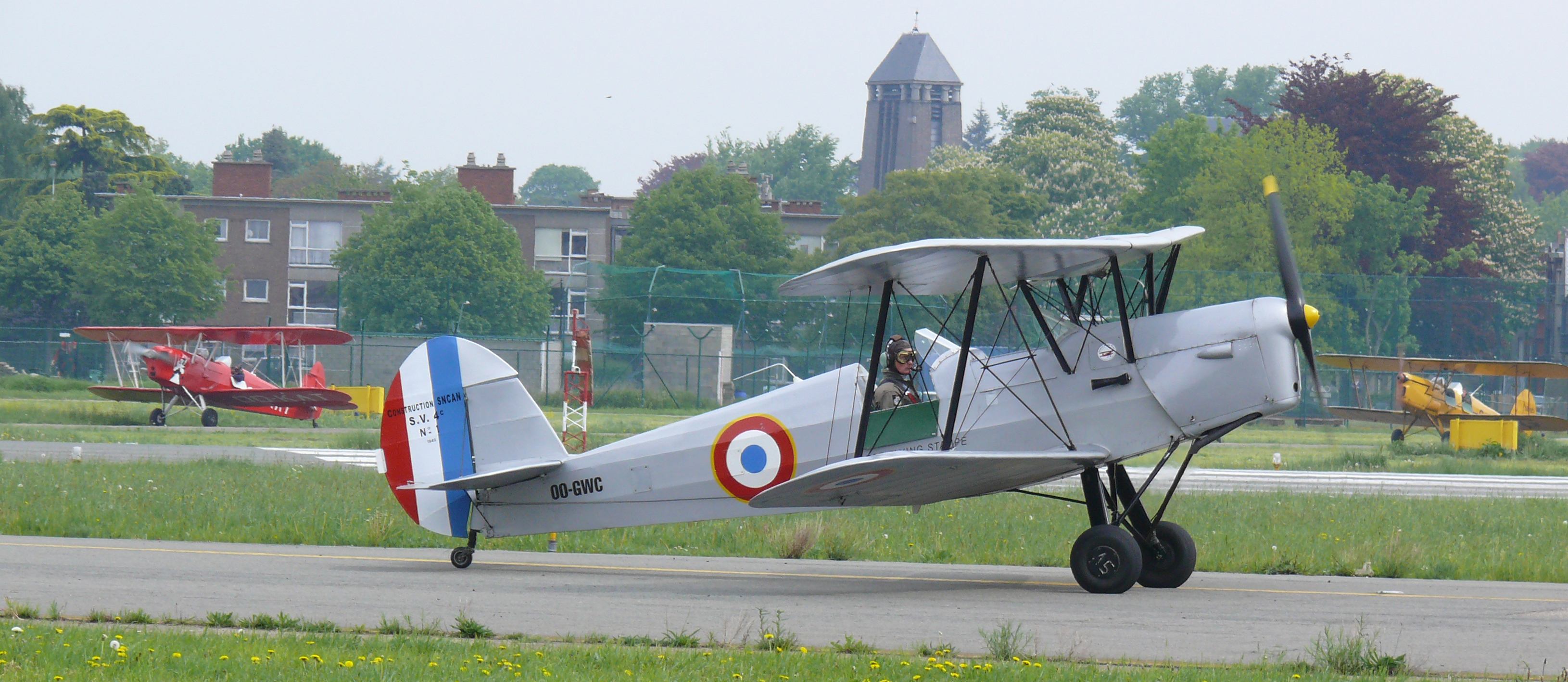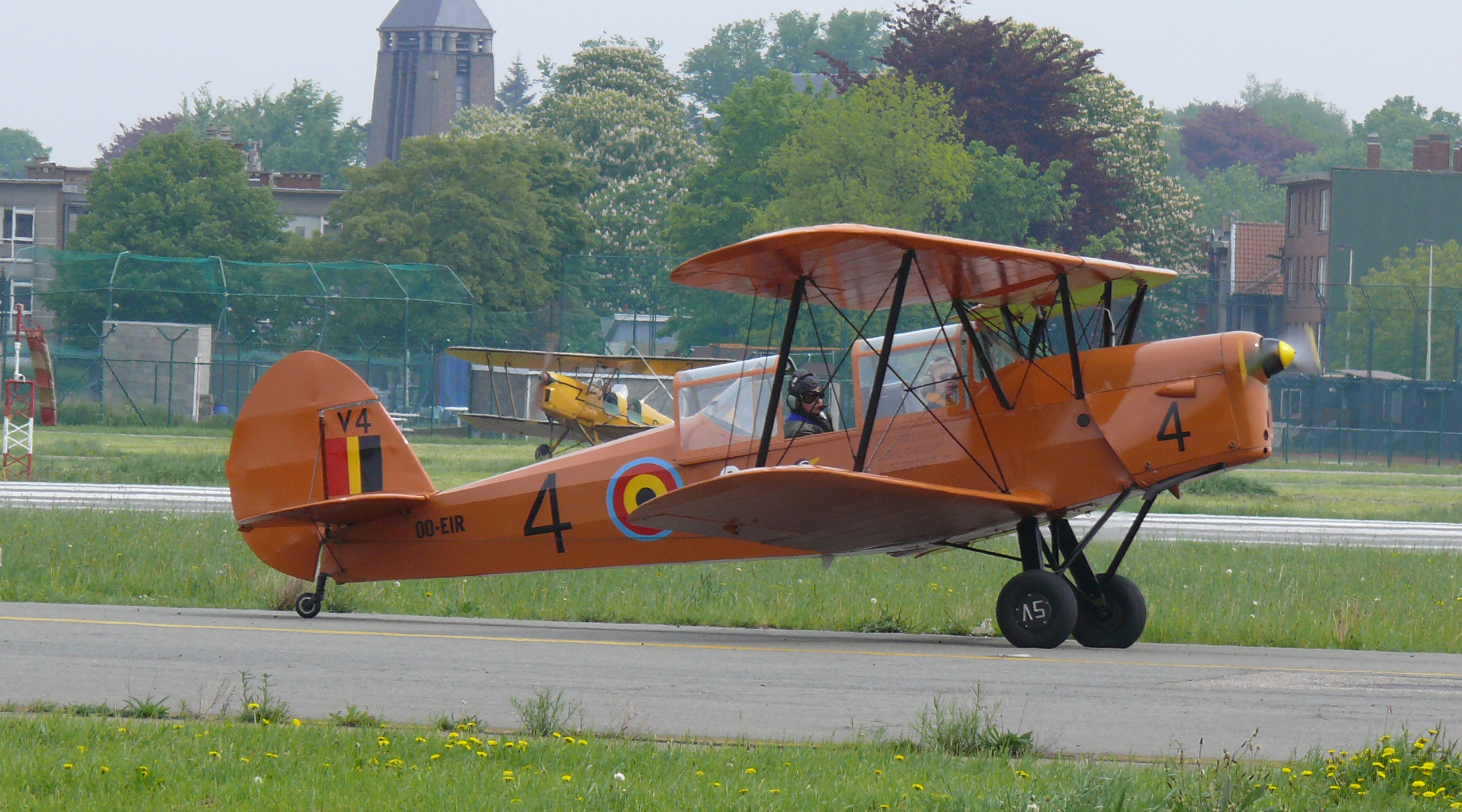Stampe SV.4 on:
[Wikipedia]
[Google]
[Amazon]
The Stampe et Vertongen SV.4 (also known incorrectly as the Stampe SV.4 or just Stampe) is a





 The SV.4 was designed as a biplane tourer/training aircraft in the early 1930s, by Stampe et Vertongen in
The SV.4 was designed as a biplane tourer/training aircraft in the early 1930s, by Stampe et Vertongen in
OO-ATD and the flight to freedom
/ref>
Belgian
Belgian may refer to:
* Something of, or related to, Belgium
* Belgians, people from Belgium or of Belgian descent
* Languages of Belgium, languages spoken in Belgium, such as Dutch, French, and German
*Ancient Belgian language, an extinct languag ...
two-seat trainer/tourer biplane
A biplane is a fixed-wing aircraft with two main wings stacked one above the other. The first powered, controlled aeroplane to fly, the Wright Flyer, used a biplane wing arrangement, as did many aircraft in the early years of aviation. While ...
designed and built by Stampe et Vertongen. The aircraft was also built under licence in France
France (), officially the French Republic ( ), is a country primarily located in Western Europe. It also comprises of Overseas France, overseas regions and territories in the Americas and the Atlantic Ocean, Atlantic, Pacific Ocean, Pac ...
and French Algeria
French Algeria (french: Alger to 1839, then afterwards; unofficially , ar, الجزائر المستعمرة), also known as Colonial Algeria, was the period of French colonisation of Algeria. French rule in the region began in 1830 with the ...
.
History





 The SV.4 was designed as a biplane tourer/training aircraft in the early 1930s, by Stampe et Vertongen in
The SV.4 was designed as a biplane tourer/training aircraft in the early 1930s, by Stampe et Vertongen in Antwerp
Antwerp (; nl, Antwerpen ; french: Anvers ; es, Amberes) is the largest city in Belgium by area at and the capital of Antwerp Province in the Flemish Region. With a population of 520,504,
. The first model was the SV.4A, an advanced aerobatic trainer, followed by the SV.4B with redesigned wings and the 130 hp/97 kW de Havilland Gipsy Major
The de Havilland Gipsy Major or Gipsy IIIA is a four-cylinder, air-cooled, inverted inline engine used in a variety of light aircraft produced in the 1930s, including the famous Tiger Moth biplane. Many Gipsy Major engines still power vintag ...
engine.
Only 35 aircraft were built before the company was closed during the Second World War
World War II or the Second World War, often abbreviated as WWII or WW2, was a world war that lasted from 1939 to 1945. It involved the vast majority of the world's countries—including all of the great powers—forming two opposin ...
. After the war the successor company Stampe et Renard built a further 65 aircraft between 1948 and 1955 as trainers for the Belgian Air Force
The Belgian Air Component ( nl, Luchtcomponent, french: Composante air) is the air arm of the Belgian Armed Forces, and until January 2002 it was officially known as the Belgian Air Force ( nl, Belgische Luchtmacht; french: Force aérienne belg ...
.
A licensed SV.4C version was built in France
France (), officially the French Republic ( ), is a country primarily located in Western Europe. It also comprises of Overseas France, overseas regions and territories in the Americas and the Atlantic Ocean, Atlantic, Pacific Ocean, Pac ...
by SNCAN
SNCAN, (abbreviated from ''Société nationale des constructions aéronautiques du Nord''), or commonly, Nord, was a state-owned French aircraft manufacturer in the pre- and post- World War II era. The company had been formed as one of six state ...
(Société Nationale de Constructions Aéronautiques du Nord), and in Algeria
)
, image_map = Algeria (centered orthographic projection).svg
, map_caption =
, image_map2 =
, capital = Algiers
, coordinates =
, largest_city = capital
, relig ...
by Atelier Industriel de l'Aéronautique d'Alger, the two firms completing a combined total of 940 aircraft. The postwar SV.4Cs were widely used by French military units as a primary trainer. Many also served in aero clubs in France, numbers of which were later sold second hand to the United Kingdom and other countries. The Rothmans Aerobatic Team flew SV.4C aircraft from 1970 to 1973.
Variants
;SV.4: prototype ;SV.4A: aerobatic trainer with 140 hp/104 kWRenault 4P
The Renault 4P, also called the Renault Bengali Junior, was a series of air-cooled 4-cylinder inverted inline aero engines designed and built in France from 1927, which produced from to .
Design and development
Charles Lindbergh's Atlantic Ocea ...
-O5 engine
;SV.4B: improved version with 130 hp/97 kW de Havilland Gipsy Major I
The de Havilland Gipsy Major or Gipsy IIIA is a four-cylinder, air-cooled, inverted inline engine used in a variety of light aircraft produced in the 1930s, including the famous Tiger Moth biplane. Many Gipsy Major engines still power vinta ...
. Postwar trainers for the BAF were fitted with more powerful Cirrus Major
The Blackburn Cirrus Major is a British, inline-four aircraft engine that was developed in the late 1930s.
Design and development
The Blackburn Cirrus Major started life as a continued evolution of the original Cirrus and Hermes series of air ...
or Gipsy Major X engine
;SV.4C: licence-built version with 140 hp/104 kW Renault 4P
The Renault 4P, also called the Renault Bengali Junior, was a series of air-cooled 4-cylinder inverted inline aero engines designed and built in France from 1927, which produced from to .
Design and development
Charles Lindbergh's Atlantic Ocea ...
ei engine
;SV.4D: one aircraft re-engined with 175 hp/130 kW Mathis G.4R engine
A few SV.4s have been fitted with other engines, such as the Lycoming O-320
The Lycoming O-320 is a large family of naturally aspirated, air-cooled, four-cylinder, direct-drive engines produced by Lycoming Engines. They are commonly used on light aircraft such as the Cessna 172 and Piper Cherokee. Different variants ...
, Ranger 6
Ranger 6 was a lunar probe in the NASA Ranger program, a series of robotic spacecraft of the early and mid-1960s to obtain the first close-up images of the Moon's surface. It was launched on January 30, 1964 and was designed to transmit high-reso ...
or LOM 332b. At least one aircraft fitted with a Lycoming engine (OO-KAT) has been referred to by its owners as an SV.4E.
Military operators
; *Belgian Air Force
The Belgian Air Component ( nl, Luchtcomponent, french: Composante air) is the air arm of the Belgian Armed Forces, and until January 2002 it was officially known as the Belgian Air Force ( nl, Belgische Luchtmacht; french: Force aérienne belg ...
;
*Force Publique
The ''Force Publique'' (, "Public Force"; nl, Openbare Weermacht) was a gendarmerie and military force in what is now the Democratic Republic of the Congo from 1885 (when the territory was known as the Congo Free State), through the period of ...
;
* French Air Force
*French Army
The French Army, officially known as the Land Army (french: Armée de Terre, ), is the land-based and largest component of the French Armed Forces. It is responsible to the Government of France, along with the other components of the Armed For ...
*French Navy
The French Navy (french: Marine nationale, lit=National Navy), informally , is the maritime arm of the French Armed Forces and one of the five military service branches of France. It is among the largest and most powerful naval forces in t ...
;
*Royal Air Force
The Royal Air Force (RAF) is the United Kingdom's air and space force. It was formed towards the end of the First World War on 1 April 1918, becoming the first independent air force in the world, by regrouping the Royal Flying Corps (RFC) and ...
** No. 510 Squadron RAF operated one aircraft "liberated" by Belgian pilots Léon Divoy and Michel Donnet
Michel G. L. "Mike" Donnet, (1 April 1917 – 31 July 2013) was a Belgian pilot who served in the Belgian Army and British Royal Air Force (RAF) during the Second World War. He shot down four enemy aircraft confirmed, and achieved the RAF rank o ...
in 1941, and flown from occupied Belgium to England./ref>
Specifications (Post-War SV.4B)
See also
References
Further reading
* * Pacco, John. "Stampe & Vertongen SV-4B" ''Belgisch Leger/Armee Belge: Het Militair Vliegwezen/l'Aeronautique Militaire 1930-1940''. Aartselaar, Belgium, 2003, pp. 85–86. . {{DEFAULTSORT:Stampe Sv.4 1930s Belgian sport aircraft 1930s Belgian military trainer aircraft Stampe et Vertongen aircraft Aerobatic aircraft Single-engined tractor aircraft Biplanes Aircraft first flown in 1933